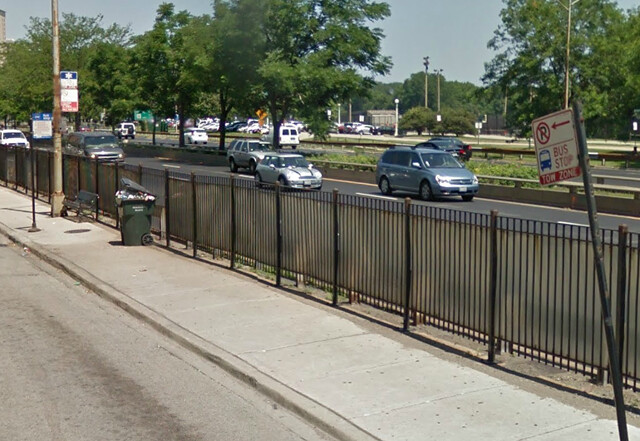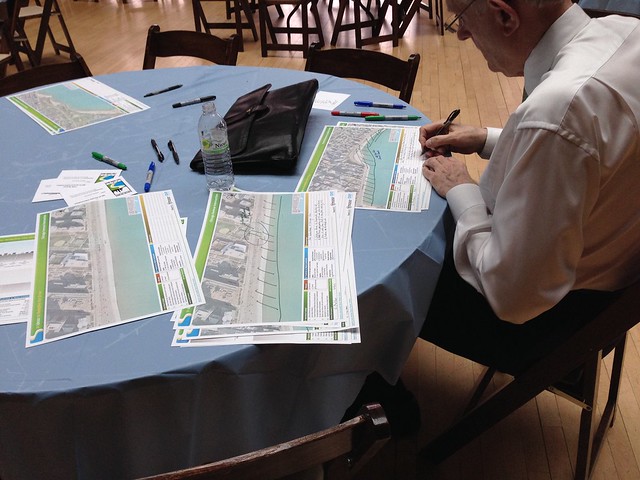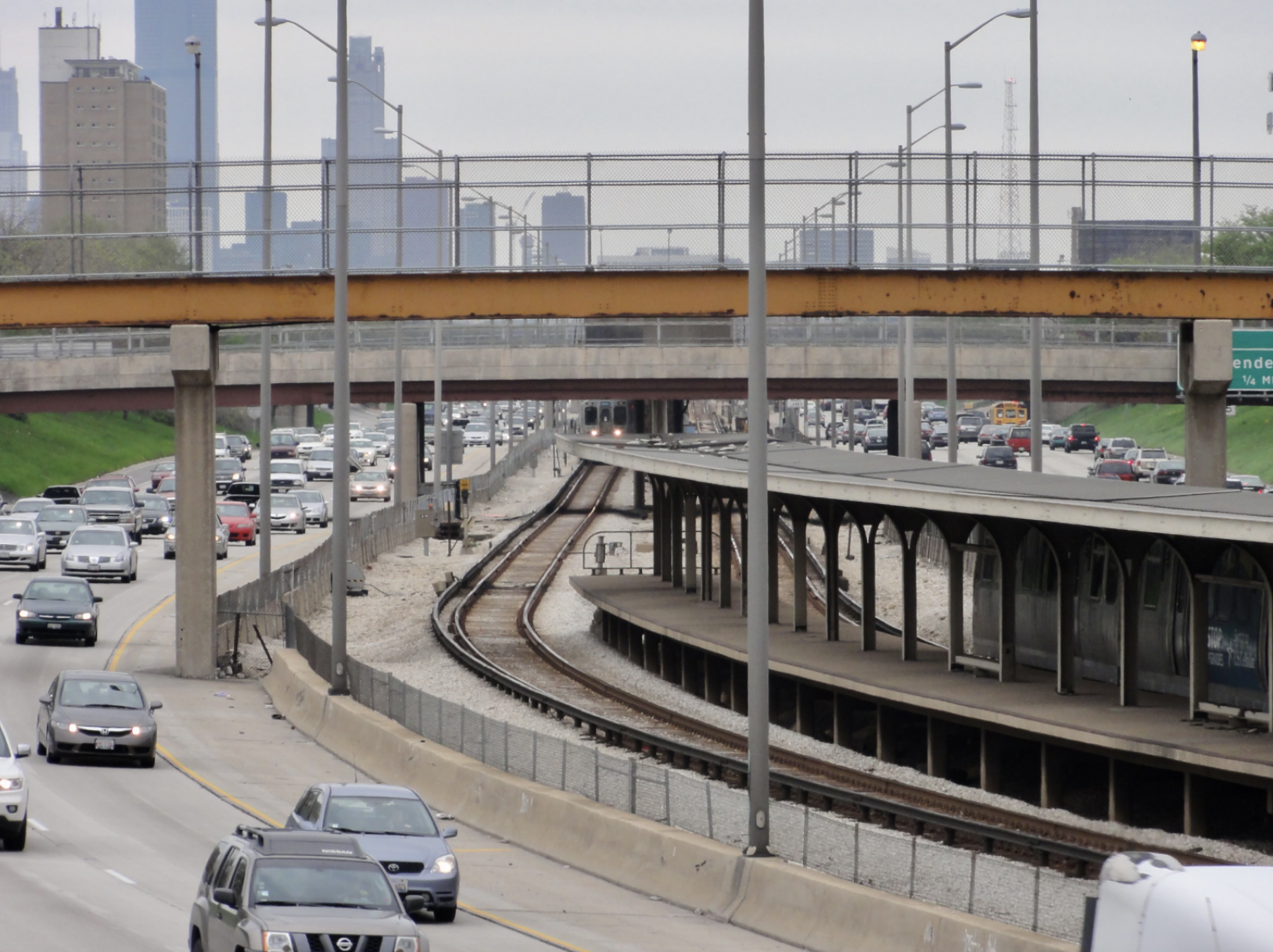Tell IDOT to Rehab LSD as a Complete Street, Not a Speedway
2:58 PM CDT on April 14, 2014

On Thursday, the Illinois Department of Transportation kicked off the feedback process for the the North Lake Shore Drive rehabilitation's future alternatives analysis, at the third meeting of the project's task forces. During the previous two meetings, it seemed like IDOT would insist upon just another highway project, with minimal benefits for pedestrians, transit users and bicyclists. Yet as the process of determining the lakefront highway's future has evolved, some hope that the project can be steered in a more positive direction.
When the city of Chicago began building LSD in the late 1800s, the road was designed to be a place where one could take a leisurely ride to enjoy views of Lincoln Park and Lake Michigan. Today, an average of 161,000 cars use the drive on a daily basis, few of them leisurely partaking in the view. IDOT estimates that 78 to 95 percent of drivers break the posted 45 mph (40 mph in winter) speed limit. In the highest-speed section, nine percent of drivers were doing more than 70 mph.
Several of the CTA’s busiest bus routes also use Lake Shore Drive. Around 69,000 passengers ride on the 970 local and express buses that ply the Drive every day, many of them residents of high-density lakefront neighborhoods. That's almost as many passengers as the Blue Line's O'Hare branch carries daily, and more than twice as many riders as dedicated busways in other cities, like Cleveland's HealthLine and Los Angeles' Orange Line.
Yet unlike those passengers, those riding LSD buses frequently get bogged down by car traffic. Northbound bus commuters who use stops along Inner Lake Shore Drive have to wait for the bus on narrow sidewalks, with only a thin fence and guardrail separating them from high-speed traffic on the main road. At intersections were buses get on and off the drive, there are complex interchanges with tight turns.
Just east of the drive is the increasingly popular Lakefront Trail. On weekdays, an estimated 15,000 people use the trail; that number balloons to 31,000 on weekends, leading to crowding and conflicts between different user groups on busy summer weekends. 76 percent of IDOT survey respondents use the trail for accessing the lakefront, 68 percent use it for walking, 66 percent for recreational biking, 41 percent for bike commuting, 33 percent for jogging, and four percent for roller skating or skateboarding. On weekdays, cyclists account for 75 percent of trips on the trail, with pedestrians making up the other 25 percent. These numbers flip during the weekend, with 25 percent bicycle trips and 75 percent pedestrian trips.
Getting to the popular trail can be challenging, even for those who live right across the street. The access points sometimes require dangerous crossings of Lake Shore Drive, are infrequently spaced in the interest of keeping traffic flowing, and sometimes involve dark corners and tight curves. The Chicago Area Metropolitan Agency for Planning forecasts that by 2040, trail use will grow by 12 percent at the northern terminus at Ardmore, where there are currently 2,000 daily users, and by 19 percent near Oak Street, where now over 22,000 people use the underpass every day.
During Thursday’s meeting, several taskforce members voiced concerns about the proposed “Purpose and Need” statement for the project. They noted that the document devoted long passages to issues facing drivers, but gave short shrift to walking, biking, and transit. Transitized blogger and Streetsblog contributor Shaun Jacobsen recently tweeted his displeasure about this:
Good lord. Reading the N Lake Shore Dr draft Purpose & Need doc. 4 pages: "improve vehicular mobility." 0.3pp for transit. 1 for bike/ped.
— Transitized (@transitized) April 11, 2014
In response, IDOT representative Bob Andres encouraged people to send feedback on the Purpose and Needs statement using the online comment form.
To gather more input for the upcoming Alternatives Analysis document, IDOT has launched a website where the public can post ideas directly to an online map, along with descriptions and attachments. The department will compile these comments and incorporate them into the first draft of the AA document. It’s crucial that as many Chicagoans as possible comment on the map, and tell IDOT that the new Lake Shore Drive must benefit pedestrians, transit users, and cyclists, not just drivers.
At the meeting, Active Transportation Alliance director Ron Burke said that his organization is pleased that the draft statement identifies the need to improve both transit service and the Lakefront Trail. However, he noted a disconnect between IDOT's projection that transit use will grow by 23 percent, its assumption that car traffic levels will stay about the same, and its statement that the project won’t build new mixed-traffic lanes.
“It's obvious we need move more people traveling by transit and bike,” Burke said. “The [statement] refers to a need to maintain current levels of car traffic, but this is presumptuous. The goal is to move people efficiently, and if we move more by transit and bikes and with carpooling, we won't need as many cars.”
Task force member Rafael Suarez proposed creating a long-distance lane for commuter cyclists, runners, and other long-distance trail users, in order to reduce conflicts. This lane could be separated from the lane for slower, more casual trail users using aesthetically pleasing barriers, such as planters.
During the event, Chicago Department of Transportation staffer Jeff Sriver assured me that both CDOT and IDOT understand that North Lake Shore Drive is a unique corridor with unique challenges. He also said funding for the next phases of the project is likely to be found, but nothing solid has been identified yet. He emphasized that there is still time for citizens to provide preliminary input, and that more public outreach is on the way.
Stay in touch
Sign up for our free newsletter
More from Streetsblog Chicago
Today’s Headlines for Thursday, April 18
Roger that! Streetsblog SF editor Roger Rudick offers constructive criticism of Chicago’s downtown bike network
"There were blocks that felt very safe and very secure," he said. "But then you're immediately – voom! – disgorged into three lanes of moving traffic with no protection."
City announces $2M federal grant to address harms caused by I-290 by improving walk/bike/transit access
The Mayor's Office says the money will fund "improvements for people walking and bicycling on existing streets and paths surrounding and crossing the corridor."



